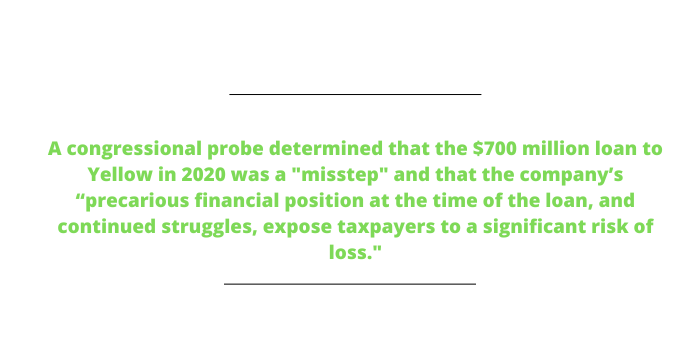Yellow Shuts Down, Overall Freight Prices May Increase

Yellow, the third-largest less-than-truckload (LTL) carrier company, has shut down services as of Sunday according to a memo put out by the company after laying off potentially thousands of employees.
The International Brotherhood of Teamsters, which represents 22,000 employees at Yellow, says that it has been served legal notice that Yellow will be filing for bankruptcy.
- This news comes less than a week after the Teamsters successfully reached a new tentative contract with UPS, narrowly avoiding a strike that would have been disastrous to the U.S. economy and the promotional products industry specifically.
- It is possible that UPS will pass on some of the financial concessions it made to the Teamsters to its customers. Likewise, the bankruptcy and potential demise of Yellow could mean LTL freight prices increase.
Yellow’s Downward Spiral
Amid the layoffs and cessation of operations, Yellow put much of the blame for both developments on actions by the Teamsters, claiming that the union’s threat of a strike (which was ultimately avoided through negotiations) caused Yellow customers to flee toward competing LTL carriers.
However, Yellow’s financial predicaments are vast and appear to be the result of decisions that date back years.
- Yellow is filing for bankruptcy with nearly $1.5 billion in debt, $729 million of it owed to the federal government.
- In 2020, the Treasury Department under the Trump administration granted Yellow a $700 million pandemic-era loan on national security grounds.
- In June, a congressional probe determined that this loan was a “misstep” while concluding that the company’s “precarious financial position at the time of the loan, and continued struggles, expose taxpayers to a significant risk of loss.”
Bruce Chan, a research director at investment banking firm Stifel, told the Associated Press that the situation Yellow finds itself in “is probably two decades in the making,” while citing poor management and strategic decisions. “At this point, after each party has bailed them out so many times, there is a limited appetite to do that anymore.”

Teamsters General President Sean M. O’Brien refused to entertain the logic that the union’s tactics led to the demise of Yellow.
“Today’s news is unfortunate but not surprising,” O’Brien says. “Yellow has historically proven that it could not manage itself despite billions of dollars in worker concessions and hundreds of millions in bailout funding from the federal government. This is a sad day for workers and the American freight industry.”
As of publishing, bankruptcy has not officially been declared but is expected this week, possibly as early as Monday.
- Yellow has ceased operations, reportedly laid off hundreds of employees and is continuously losing customers to competitors, all of which significantly increase the likelihood that bankruptcy will mean the end of Yellow as a freighting business.
In 2022, Yellow handled an average of 49,000 shipments per day. That number is said to have vastly decreased over the course of 2023.
- It was the largest union employer in the LTL carrier sector.
- Yellow began operations 99 years ago.
What Does This Mean For Promo?
First and foremost, any longstanding Yellow customers need to find alternative options for LTL shipping (more on this below).
- Current customers have been told to address any concerns via the phone number 800-160-6500 or visit this customer service page.
If Yellow’s closure proves to be permanent, its customers will be absorbed by other companies one way or another. Its failures will mean less competition in the marketplace and could lead to higher prices.
- Yellow’s reputation had been as a cheaper alternative to its competitors.
“That's why they were obviously not making money,” Satish Jindel, president of transportation and logistics firm SJ Consulting, told the Associated Press. “While there is capacity with the other LTL carriers to handle the diversions from Yellow, it will come at a high price [compared to what Yellow customers are used to].”
PPAI Members Have Another Route To Savings
As promo companies assess how much this news might affect them in the near or long term, there are options to be found, and PPAI members can receive perks in terms of LTL carriers.
FedEx is an Affinity Partner with PPAI.
- This means that PPAI members get discounted rates up to 50% on shipping services.
- If you have questions about what FedEx benefits your PPAI membership could get you, reach out to Affinity@PPAI.org.

